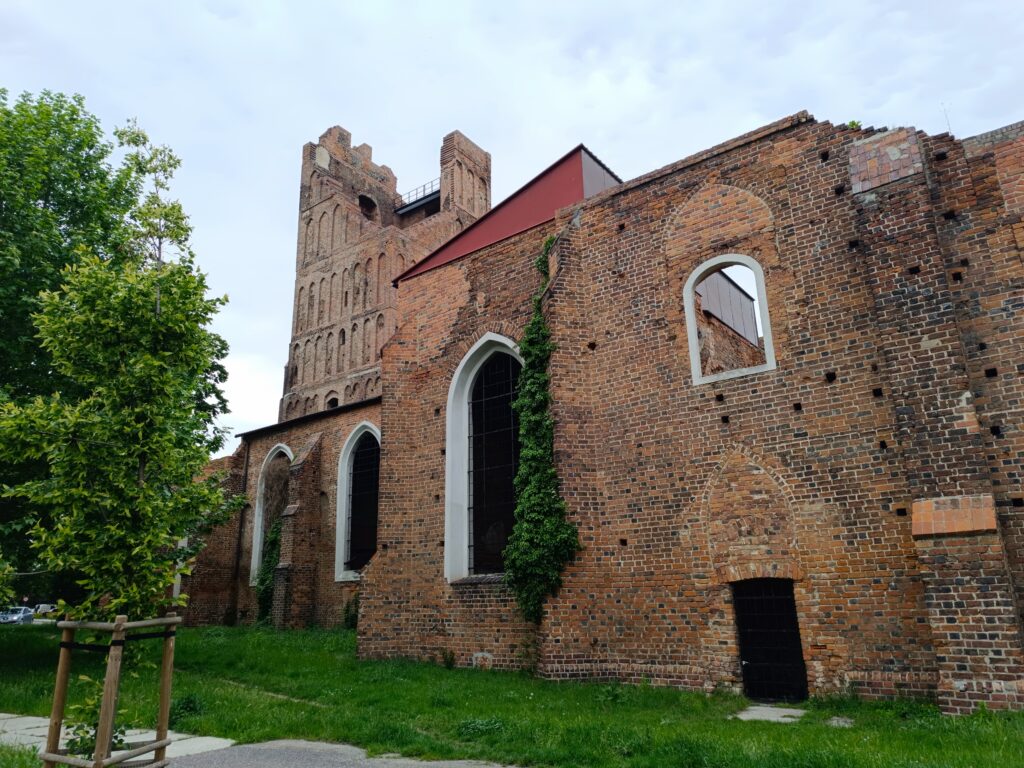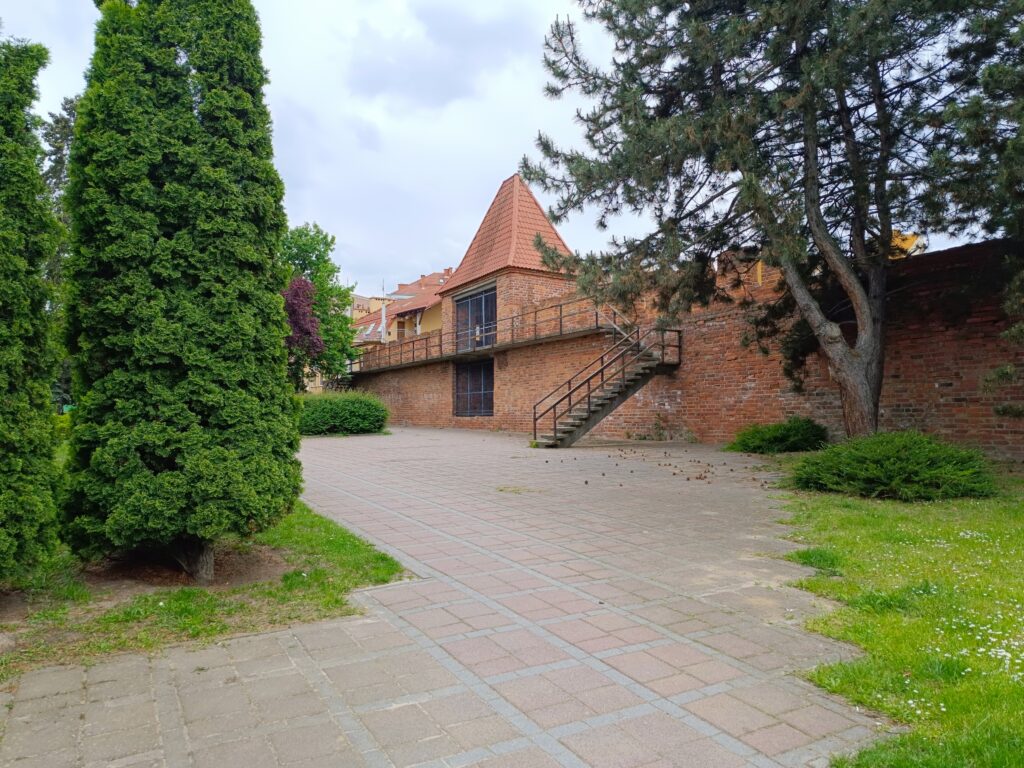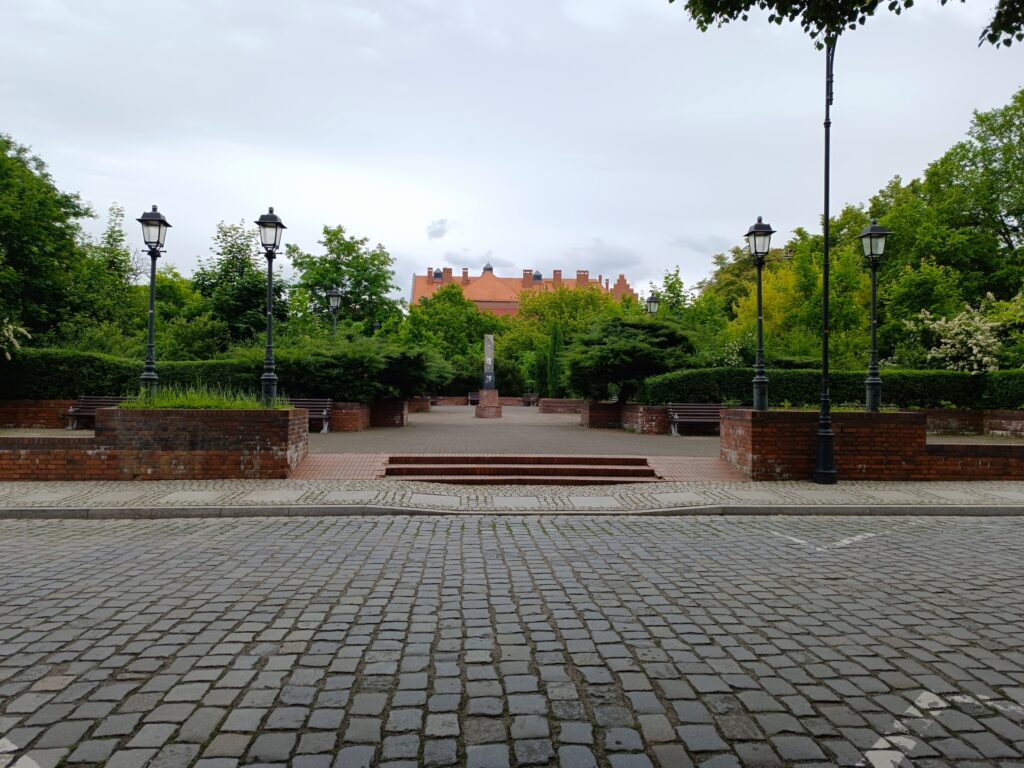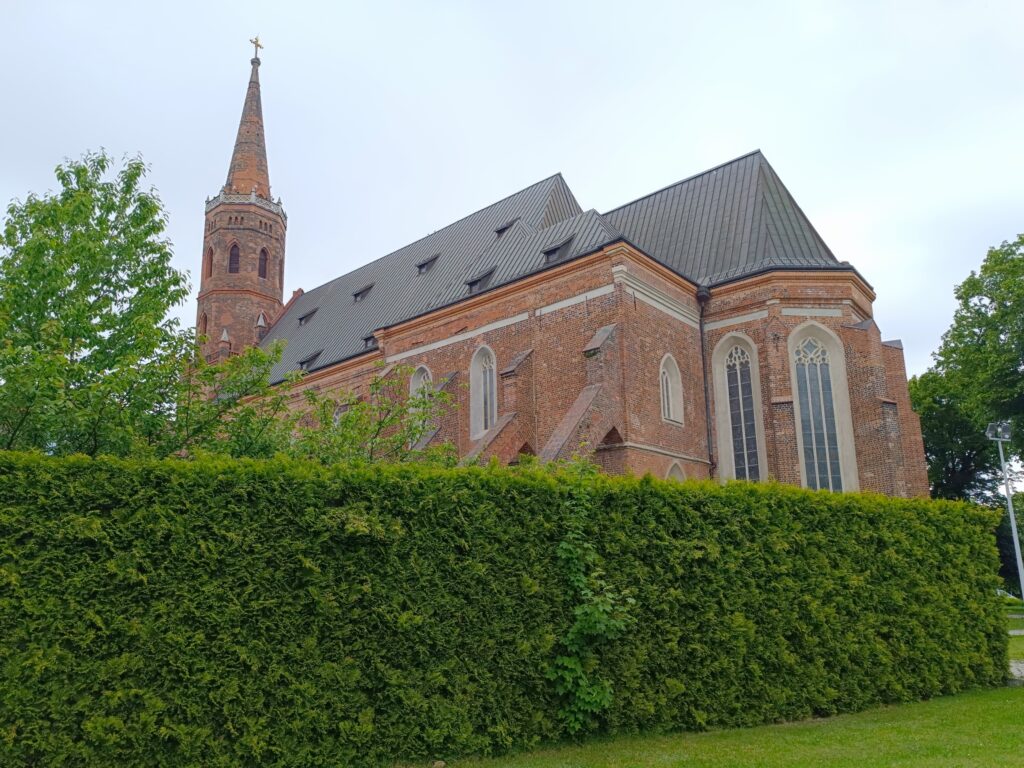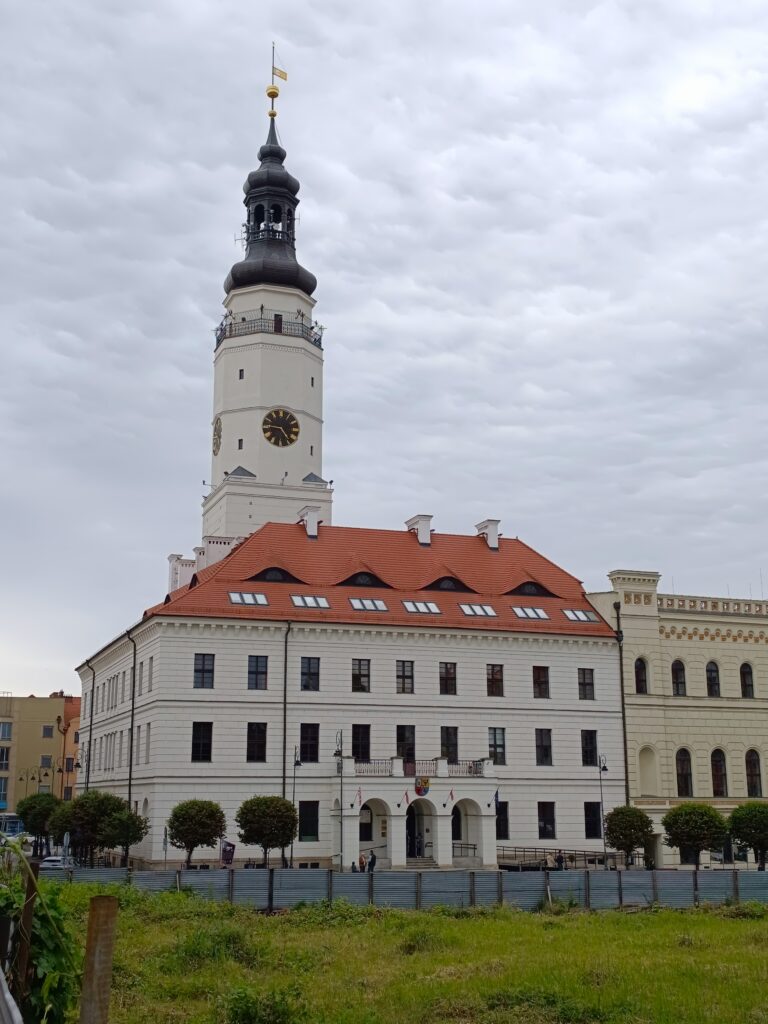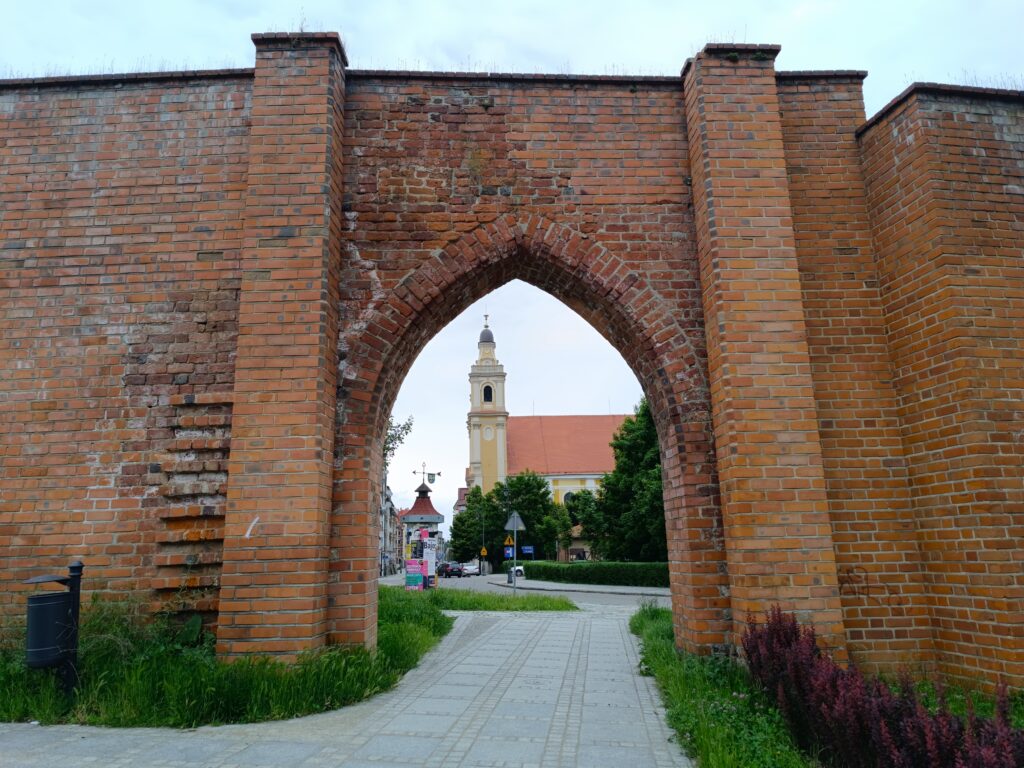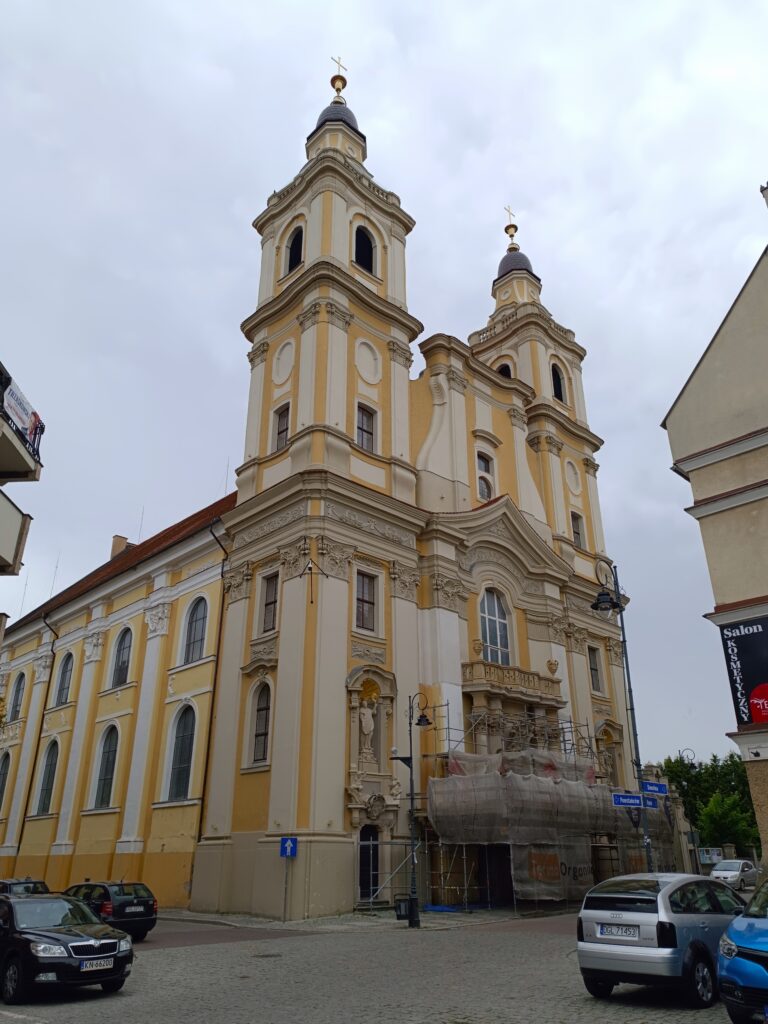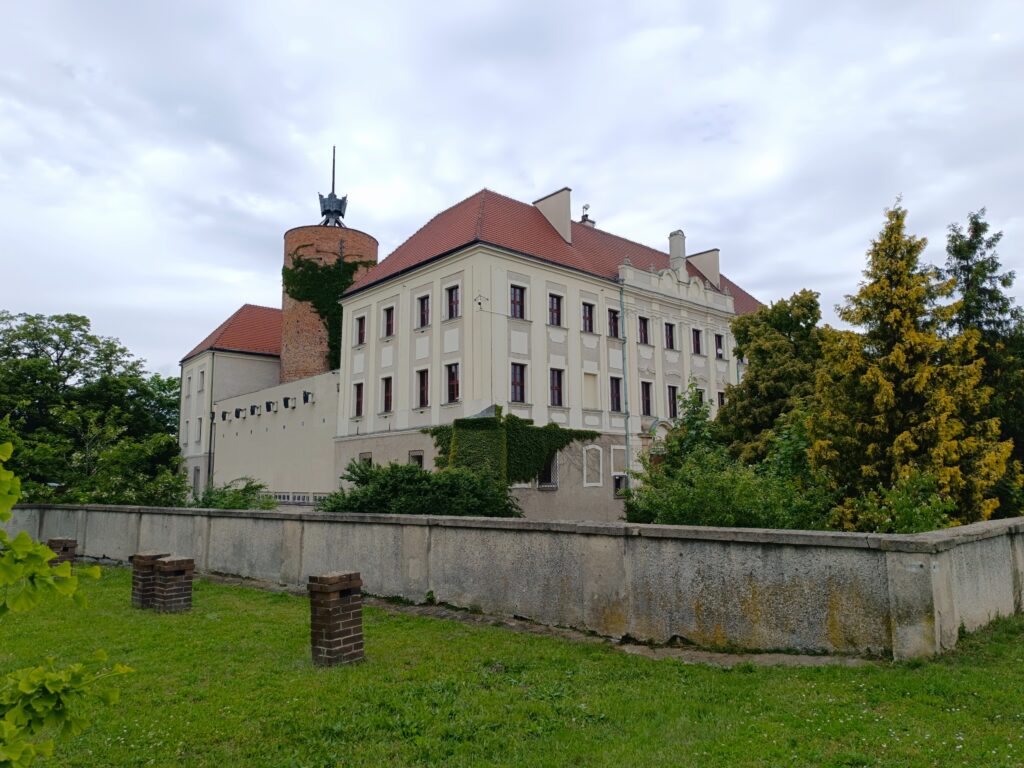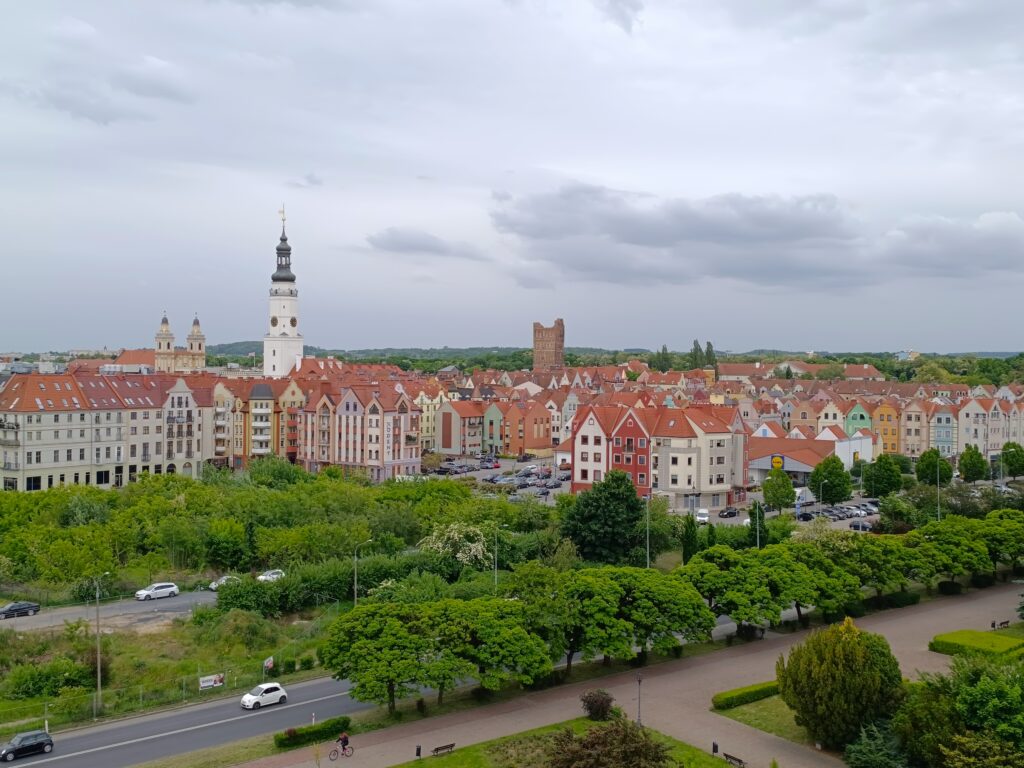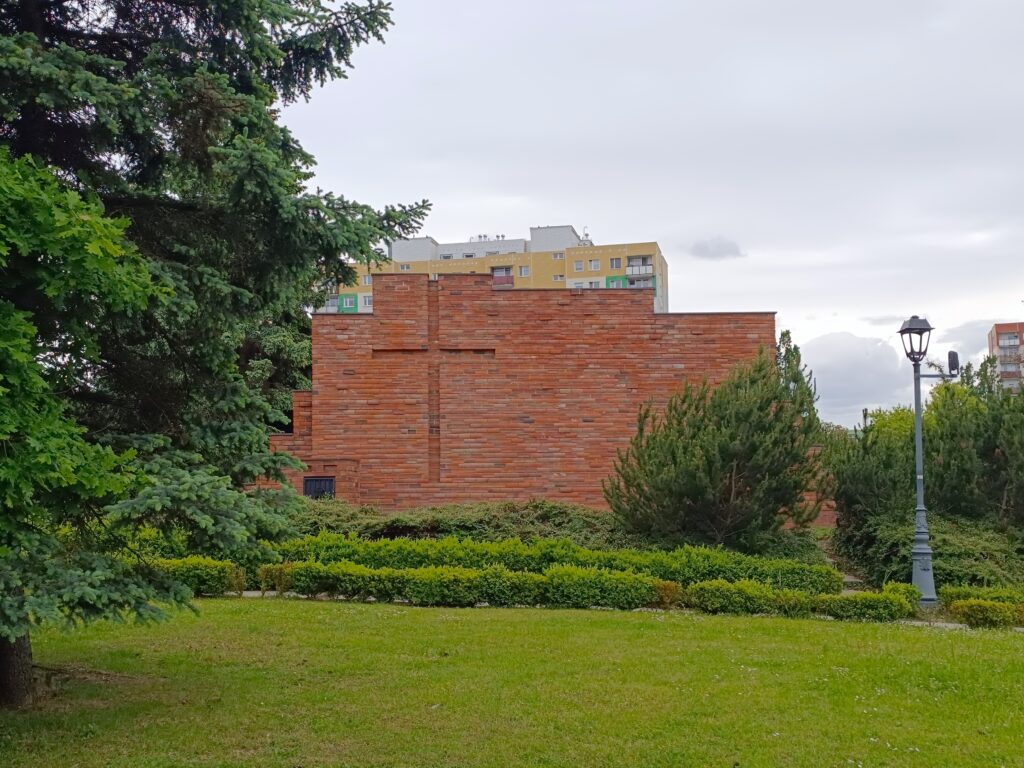All you need to know about the city of
GŁOGÓW
POLAND
SIGHTSEEING
Głogów, a city deeply scarred by war, has for years been steadily rebuilding its cultural and historical heritage. The most important landmark on its historical map is the Castle of the Dukes of Głogów, situated near the first collegiate church in Silesia and the charming town square, home to the tallest town hall tower in the region.
CURIOSITIES
This is a city rich in fascinating stories—from the legendary Defense of Głogów, to the significant Głogów Assembly, and the life of the first printer of Polish origin.
HistorY
Głogów ranks among the most important cities of Lower Silesia. Its turbulent past led to the division of the city and frequent political shifts. Eventually, it was transformed into a fortress, a decision that significantly limited its population and hindered development for many years.
CONTENTS
- The Origins of Głogów
- Border City of Resistance
- Głogów at the Center of Piast Politics
- Throne and Poison
- The CIty of Two Thrones
- Legacy, Betrayal, and the War for the Homeland
- A City Between Crowns
- Fortress and Ruin
- Głogów in the Shadow of the French
- A City Freed from Its Walls
- A Place Rewritten Anew
SIGHTSEEING
Castle of the Dukes of Głogów
Admission: 12 PLN regular, 7 PLN reduced
A good way to begin a visit to Głogów is at the Castle of the Dukes of Głogów. Not only because it was once the residence of the Piast rulers — it also houses the Archaeological and Historical Museum, which allows visitors to better understand the history of the town.
A wide range of diverse exhibitions is presented here. You can learn more about the famous defense of Głogów, discover the fate of the town during World War II, hear the story of Duchess Salomea (more about Salomea here), get acquainted with the culture of the local nobility, and also visit the famous Głogów treasure — by far the museum’s greatest attraction (more about the treasure here).
Equally interesting is the archaeological section of the complex. It showcases finds related to the ancient burial practices of local tribes. The visit concludes in the most atmospheric hall — one enters the dimly lit underground to see the remains of medieval structures, such as the famous collegiate church of Głogów.
Visitors also have access to the castle tower, from which they can take photos of the town’s panorama.
Collegiate Church of the Assumption of the Blessed Virgin Mary
Admission: Free
On the other side of the Oder stands the Collegiate Church of the Assumption of the Blessed Virgin Mary — arguably the most valuable monument in the entire town. It is the oldest collegiate church in all of Silesia, founded in 1120 as a duke’s thanksgiving for the heroic defense of Głogów (more about this here).
As a result of 18th-century reconstruction, the interior acquired its characteristic Baroque style. Nevertheless, one can still notice late Romanesque fragments from the 13th century, such as the half-columns of the arch before the presbytery or the windows. It is also definitely worth paying attention to the specially built crypt, where 12th-century artifacts can be seen.
The collegiate church is in fact still being rebuilt after wartime destruction. However, although successive renovations restore its former glory, there are things that cannot be replaced — such as the priceless painting of the Głogów Madonna from the early 16th century, which was looted by the Russians and remains in Moscow to this day.
Church of Corpus Christi
Admission: Free
Another interesting site near the town center is the late Baroque Church of Corpus Christi. It was built in the 15th century as a small chapel, which later served as the castle chapel. It was only in the 18th century that a church was erected here, giving it its present appearance.
What makes this church stand out are the 18th-century frescoes created by E.T.A. Hoffmann during his stay in Głogów. He was a Romantic-era writer, regarded as a precursor of horror literature, and his works were translated worldwide. Through his story Die Jesuitenkirche in G., Hoffmann brought the Głogów church into literature.
Ruins of St. Nicholas' Church
Admission: Free
A distinctive landmark in the townscape are the ruins of St. Nicholas’ Church. It was a former church whose origins date back to the 13th century. Although later rebuilt in Gothic and Baroque styles, it endured through the centuries.
It did not, however, survive World War II, when — along with nearly the entire town — it was reduced to ruins. Unlike other monuments of Głogów, no restoration was carried out, nor is reconstruction planned. Instead, it has been secured against collapse, and there are plans to make it accessible to visitors.
Today, it is meant to serve as a grim monument to the battles between the Third Reich and the Red Army, and perhaps also as a reminder of the devastating consequences that war can bring.
Market Square
Admission: Free
After the devastating wartime destruction, the town has been gradually rebuilt before our eyes, with its center deliberately styled to appear historical, in order to emphasize its past traditions.
In the central part of the market square stands the town hall, whose origins date back to the 13th century. In the 19th century, a clock was installed here in which the hands had reversed functions compared to usual — the small hand indicated minutes, and the large one indicated hours. This caused numerous misunderstandings between residents and visitors. Later, the clock was replaced with a model from a local factory, which won the main prize at the World Exhibition of Clocks in Vienna in 1873. Unfortunately, the town hall was almost completely destroyed during World War II — only the lower floors survived.
Nearby is also the charming Andreas Gryphius Theater, built in 1799. It operated almost until the end of World War II, when it was destroyed during the Soviet offensive.
It is also worth seeing the remains of the Church of the Ship of Christ, which was originally an 18th-century Evangelical church. It was completely destroyed during World War II, and its foundations were later blown up. However, in 2003, a lapidarium was created in its place — a space for rest in the outline of the former church, surrounded by a brick border, where one can sit and reflect on Głogów’s turbulent history.
A similar approach was taken with the former synagogue, destroyed by the Nazis as early as 1938. In its place, too, a lapidarium was created — recreating the former outline of the building.
Remains of the City Walls
Admission: Free
While strolling around the center of Głogów, it is worth stopping by the 13th-century town walls and visiting the excellently reconstructed towers. Unlike many other sites, these fortifications are largely original. They are also often accompanied by other monuments or memorials, such as the commemorative plaque of Kasper Elyan (more about him here).
One section of the walls is located near the castle, in the park on John Paul II Square. Another, known as the Hospital Gate, is situated on Salt Square, not far from the market. The last fragment can be seen at Sigismund the Old Square.
Lapidarium of St. Peter's Church
Admission: Free
This is another lapidarium, located a bit farther from the market square. A 12th-century Church of St. Peter once stood here, serving its spiritual function for the entire left-bank part of Głogów.
However, in the 19th century secularization arrived, and the church property was taken over by the Prussian state. By the end of that century it had already been demolished, and its remains were discovered only in the 1960s.
In 2006, partial restoration was completed, and a lapidarium was created, which at the same time serves as a monument in memory of John Paul II. In the partially rebuilt presbytery with two apses, one can see quotations of the Polish Pope inscribed on the bricks.
CURIOSITIES
Children on the Engines of War
In 1109, Poland was ruled by Bolesław III Wrymouth. He pursued an aggressive foreign policy—aiming to expand influence over Pomerania and supporting the Hungarians in their conflict with the Czechs. In response, the German Emperor Henry V issued an ultimatum: the Polish duke was to submit to the Empire, pay tribute, and cease military interventions in Pomerania. After Bolesław rejected these demands, Henry organized a military expedition to Poland, and knights from across Germany marched toward the Polish border.
Bolesław, still engaged in warfare in Pomerania, could not immediately direct his forces westward. During this time, the emperor gathered an army and entered Silesia through Lusatia. His troops crossed the Oder River at a previously unknown ford—the discovery surprised the defenders and worsened their position.
Henry’s forces advanced on Głogów, destroying the suburb, routing ducal units, looting, and taking prisoners. Facing overwhelming odds, the townspeople attempted negotiations. A five-day truce was agreed upon, during which local children were handed over to the Germans as hostages—with the promise that they would be released regardless of the outcome of talks. The citizens sent a messenger to Bolesław, asking for permission to surrender the stronghold.
The duke firmly refused—according to accounts, he even threatened the townspeople with crucifixion. After receiving this reply, Henry ordered the hostages to be tied to the siege engines, hoping the defenders would not dare open fire. The imperial forces, supported by Czech allies, prepared for an assault. A fierce battle broke out—the Germans were fired upon with arrows and crossbows, pelted with stones. Boiling water was poured on the attackers, logs were thrown down, and ladders were pushed away with hooks. According to Cosmas of Prague, the defenders spared neither their own sons and relatives nor the Germans and Czechs.
Meanwhile, Polish units conducted guerrilla-style raids, successfully hindering enemy operations. Due to the fierce resistance of the people of Głogów and the mounting losses, Henry abandoned the siege. He attempted an assault on Wrocław, but Bolesław soon returned from Pomerania and defeated the emperor at the Battle of Psie Pole. After this encounter, Henry withdrew from Poland.
Given the historical distance, it is difficult today to fully separate fact from legend. Historians continue to debate who broke the truce—some sources claim it was the Poles who attacked first, despite the agreement. Regardless, the siege, the attempted negotiations, and the use of hostages as human shields remain historical facts.
The First Polish Printer
An interesting historical figure from Głogów was Kasper Elyan, born in 1435. He studied both in Poland and in what was then Germany. He earned a bachelor’s degree, studied law, and eventually became interested in printing during his stay in Cologne. In 1475, he established a printing house in Wrocław. This was the first printing press in Polish history, where the first text in the Polish language was printed—the synodal statutes of the bishops of Wrocław. These included the prayers Our Father and Hail Mary.
A commemorative plaque in Głogów honors his contribution to the development of Polish texts.
Mother of the Głogów Piasts
In the 13th century, if one wished to strengthen their political position, it was worth using the good old tradition—arranging a marriage. In this way, Salomea of Greater Poland was given in marriage to Conrad I of Głogów. Thanks to this, a valuable alliance was concluded, which made it possible to establish the Duchy of Głogów.
The couple had six children, from whom the entire line of the Głogów Piasts descends, a line that lasted until the 16th century. Salomea enjoyed a reputation as a person devoted to the development of Christian values and the support of the clergy.
According to legend, it was she who indicated the site for the construction of the new collegiate church—she released a white dove, which settled on the ramparts of the former stronghold on Ostrów Tumski. It was there, in accordance with her will, that the collegiate church was erected, and it stands in that place to this very day.
Salomea’s son ordered the construction of a statue commemorating the former duchess, which has survived to the present day and is dated to around the year 1290.
The Mystery of the Buried Treasure
The Głogów Treasure is one of the largest discoveries of medieval coins ever made in Poland. It was found in 1987 during earthworks in a garden allotment area. The hoard includes over 20,000 coins—mostly denarii and bracteates—as well as silver ingots. Most of the coins date back to the 12th century, although some originate as early as the 11th century.
The treasure was most likely hidden between 1210 and 1215. Its owner may have been a wealthy knight or clergyman associated with Głogów. At the time, such an amount of silver could buy an entire village! It is believed that the hoard was originally even larger, but part of it was looted before the authorities could secure the site.
Fortunately, a significant portion was recovered and is now part of the collection at the Archaeological and Historical Museum in Głogów, where it remains on permanent display.
Polish Record on the Roundabout
Głogów holds one of Poland’s more unusual records—it is home to the largest roundabout in the country, and one of the largest in Europe. The Constitution of May 3rd Roundabout, as it is officially named, contains within it a park with an area of 5 hectares. Unfortunately, the park is not accessible—there are no pedestrian crossings, and there are no signs that this will change anytime soon.
Despite its size, the roundabout itself is not as wide as one might expect—it has only three traffic lanes. Its circumference is just under one kilometer, and driving around the entire circle takes about one minute.
A Union That Began in Głogów
An interesting historical event connected to Głogów was the Congress of Głogów, which took place in 1462. It was attended by George of Poděbrady and Casimir IV Jagiellon. The main topic of their discussions was the growing threat posed by the Ottoman Empire—a defensive alliance was formed, and a declaration of friendship was signed.
Other important agreements were also reached. The parties agreed to cooperate in securing trade routes and combating coin forgery. The King of Bohemia renounced claims to the Polish parts of Silesia—Oświęcim, Zator, Żywiec, and Siewierz. In turn, the King of Poland gave up further claims related to the unpaid portion of his wife Elizabeth’s dowry.
It is worth noting that during the congress, George of Poděbrady pledged to present the candidacy of Władysław Jagiellon as his successor. This was not an empty promise—in 1471, Władysław indeed became King of Bohemia. This led to the unification of the lands of Poland, Bohemia, and Silesia under one dynasty, which soon also included Hungary. The preservation of that influence remains one of the most fascinating what if scenarios in Polish history.
The Mystery of Głogów’s Coat of Arms
An intriguing element that reflects the rich history of Głogów is its coat of arms, composed of five distinct symbols.
The first is an image of the Madonna with Child, which appeared as early as the 14th century and refers to the patroness of Głogów’s collegiate church. Another symbol is the classic black eagle without a crown—a sign of Głogów’s belonging to Silesia.
The black bull’s head commemorates a starost (governor) from the Austrian period who used his coat of arms on coins minted in Głogów. The raven, added to the coat of arms in 1490, refers to the Hungarian Corvinus dynasty. After taking over the city, they granted it this symbol—a reference to their family emblem.
At the center of the coat of arms is the letter G—the city’s initial, completing the entire composition.
HISTORY
The Origins of Głogów
The name Głogów has evolved over the centuries. Initially, the town was likely named after the Old Slavic word glogh, which meant thorn or spike, and was also used to describe thorny plants. The name referred to the location of the settlement, which was surrounded by such vegetation.
Głogów is one of the oldest cities in Poland. Its beginnings date back to the 10th century, during the time of the Dziadoszan tribe. Around the year 990, Mieszko I incorporated the area into his state and built a mighty stronghold on what is now Ostrów Tumski. It was a key strategic location—trade routes from the west and south converged here on their way to central Poland. Additionally, it was a favorable site for crossing the Oder River.
Border City of Resistance
Already in the early 11th century, German armies twice approached the stronghold during their conflicts with Bolesław the Brave, though they did not attempt to capture it. The most famous siege, however, was in 1109—an event recorded not only in historical sources but also deeply embedded in the collective memory of the city’s residents. Over time, this episode took on legendary status, becoming a symbol of local pride. It is commonly believed that the collegiate church, founded in 1120 and the first of its kind in Silesia, was a reward for the townspeople’s bravery.
In the 12th century, Bolesław III Wrymouth established the so-called Głogów March. The term march dates back to the Frankish Empire and referred to a militarized border zone designed to defend the realm from invasions. The Głogów March was accountable only to the Duke of Poland himself.
It was also, Bolesław Wrymouth who, in 1138, decided to divide Poland among his sons—a move that began the period known as the Fragmentation of Poland. During this era, regional dukes gained increasing autonomy and, in some cases, full independence from the senior duke based in Kraków.
Głogów at the Center of Piast Politics
The first duke of all Poland was Władysław the Exile, who simultaneously ruled over Silesia. After his death, the Silesian lands were divided, and control of the Głogów March was taken over by Konrad the Lame, Władysław’s son.
Meanwhile, leadership in Kraków—the seniorate capital—had changed, making the march (which reported directly to the senior duke) a potential threat to the dominant position of Bolesław the Tall, Duke of Silesia. After Konrad’s death, Bolesław took control of the Głogów March and, aiming to strengthen his rule, converted it into a standard castellany in 1190, merging it with the rest of Silesia.
A key figure of the 13th century was Henry II the Pious. Thanks to the efforts of his father, Henry the Bearded, he came to rule over Silesia, Kraków, and half of Greater Poland. These were considerable territories in a fragmented Poland, and the young duke might have succeeded in reuniting the country nearly a century early—if not for his untimely death in the Battle of Legnica after just three years of rule.
His death led to the division and even further fragmentation of his lands. By 1251, the first Duchy of Głogów was established, and in 1278, more duchies split off from its territory—namely the Duchies of Ścinawa and Żagań.
Throne and Poison
The first Duke of Głogów was Konrad I of Głogów. During his reign, the first brick ducal castle was built. He also granted the town Magdeburg rights, which enabled the development of trade and the hosting of assemblies—essentially granting the settlement full municipal rights. The town was surrounded by a palisade and earthen fortifications; actual stone defensive walls were not constructed until the late 13th century.
The duchy was briefly reunified by Henry III in the early 14th century, but the duke died young, leaving behind five underage sons. At first, they ruled the Duchy of Głogów jointly, but eventually, the territory was divided again. This led to the creation of separate duchies, including Żagań, Oleśnica, and Ścinawa, while Przemko assumed control of Głogów. The dukes from this line also had influence in Greater Poland, although—after a series of conflicts with Władysław the Elbow-high—they managed to retain control only over Wschowa.
In 1327, most of the fragmented Silesian duchies paid homage to John of Luxembourg, the King of Bohemia. Przemko’s brothers from Ścinawa and Żagań followed suit. However, Przemko refused—according to legend, he claimed he would rather leave his homeland on a single horse than acknowledge a foreign ruler.
This act of defiance may have led to his poisoning in 1331. According to tradition, his duchy was to be divided between his brothers from Żagań and Ścinawa. However, the King of Bohemia, using his military advantage, forced one brother to cede half of the duchy and ignored the claims of the other. Soon after, he entered Głogów and directly incorporated the city into the Czech Crown.
The City of Two Thrones
When Henry V the Iron rose to power in nearby Żagań, he quickly laid claim to the Duchy of Głogów. After a year-long war, a final agreement was reached: part of the city and duchy was granted to Henry. The definitive division came into effect in 1360, splitting the city into two parts—the ducal and the royal. The border ran along the streets, and certain facilities—such as St. Nicholas’ Church, the town scales, the school, the salt market, and the mill on the Oder River—were placed under joint administration. This division lasted for the next 150 years.
Over the following decades, the ducal half of the duchy was ruled by the sons and later grandsons of Henry V the Iron. It became common practice for brothers to share rule on the throne. Naturally, a city split in two faced certain economic difficulties. However, the actual condition of ducal Głogów depended largely on its ruling duke. During Henry VII’s reign, the city experienced moderate growth, while his successor, Henry VIII, heavily indebted it.
As for royal Głogów, in 1384, it was granted as a hereditary fief to Duke Przemysław Noszak of Cieszyn, in gratitude for his service. In 1385, the Głogów dukes paid homage to Przemysław, and the dukes of Cieszyn chose the Głogów castle as their seat. From that moment on, this part of the city came to be known as Cieszyn Głogów.
Legacy, Betrayal, and the War for the Homeland
The situation changed in the 15th century, when war broke out between George of Poděbrady, King of Bohemia, and Matthias Corvinus, King of Hungary. The Duke of Cieszyn sided with George, while the majority of Silesian dukes—including Henry IX of the Głogów line of the Piasts—supported Matthias Corvinus.
Hungarian forces entered Silesia in 1469, and the local Silesian nobility pledged allegiance to Corvinus. Distrusting the Duke of Cieszyn, the new king stripped him of Royal Głogów and granted it to Duchess Margaret of Cieszyn. After her death, Głogów was to be inherited by Henry XI, son of Henry IX.
History might have unfolded without major complications, but Henry XI died first, in 1476. It then emerged that he had bequeathed his entire estate to his 12-year-old wife from the Hohenzollern dynasty of Brandenburg. This led to a rapid military takeover of key cities by the Brandenburgers. In 1480, they entered Royal Głogów, burned the Jewish quarter, and effectively ended the division of the city.
This conflict did not go unanswered by John II of neighboring Żagań, who had already been fighting Brandenburg forces. Initially, he had the support of Matthias Corvinus. In 1481, an agreement was signed granting John II lifetime rule over the Duchy of Głogów, after which it would pass to the Hungarian Crown. However, John II had other plans—wanting to retain power for his own dynasty, he broke the alliance and renounced obedience to Matthias Corvinus.
A City Between Crowns
Such a policy ended in complete failure for John II — in 1488, Hungarian troops captured the Duchy of Głogów, and power was taken over by the son of Matthias Corvinus. However, after Matthias’s death, the situation changed: the Jagiellonian dynasty from Poland ascended the Hungarian throne. The new rulers forced the young Corvinus to renounce his claims to Głogów, in exchange for which he was granted lands in Croatia. Głogów, in turn, became hereditary property of the Polish kings. Simultaneously, the Jagiellonians also seized power in Bohemia, giving them effective control over all of Silesia.
After decades of divisions and devastating wars, Głogów was in a difficult situation. This changed thanks to Sigismund I the Old, who assumed power in the city as a young prince. He carried out a judicial reform, actively combated lawlessness in the duchy, and initiated a monetary reform across Silesia. In Głogów itself, he opened a mint. After ascending the royal throne, he had to relinquish control of Głogów, but he did not forget the city — he ensured that the trade route connecting Poland and Lithuania to Germany passed through Głogów.
In 1526, Louis II Jagiellon died, and the Habsburgs assumed the throne of Bohemia, thereby taking control of Silesia and Głogów. Initially, Habsburg rule brought rapid development to Głogów. The city became the second most populous center in Silesia, with over 20,000 inhabitants. Crafts flourished, particularly pottery and textile production, which, thanks to proximity to the Oder River, could be easily exported.
Fortress and Ruin
Much changed as a result of the Thirty Years’ War — a conflict that broke out in the early 17th century between the Catholic Habsburgs, who sought domination in Europe, and the Protestant states, mainly from the continent’s north. Due to its strategic location, Głogów was transformed into a fortress between 1630 and 1632. As part of this process, the suburbs located outside the ramparts were demolished, halting the previously dynamic development of the city.
The following years proved even more difficult — Głogów was besieged multiple times by various European armies, until it was eventually captured by the Swedes, who remained in the city until 1650. The city was destroyed and depopulated, but over time, reconstruction efforts began. Churches were restored, resulting in outstanding works of art, notable across all of Silesia, such as the pulpit and altar in the Głogów collegiate church.
The region enjoyed relative peace until the 18th century, when the Silesian Wars began. As a result, Prussia annexed nearly all of Silesia, and Głogów was renamed Groß-Glogau. New administrative regulations were introduced — the city became one of only two in Silesia to host the so-called Kriegs- und Domänenkammer. This meant a reduction in municipal autonomy and the stationing of Prussian troops, whose maintenance burdened the city’s budget.
Głogów in the Shadow of the French
The city’s situation further deteriorated during the Napoleonic Wars. In 1806, Głogów was captured by French forces, who stationed their troops there for the next seven years. The burden of maintaining a garrison of 9,000 soldiers naturally fell on the city. Polish troops were also quartered in Głogów — including Jan Henryk Dąbrowski’s army and forces of the Duchy of Warsaw.
The siege by the anti-Napoleonic coalition in 1813–1814 proved particularly devastating. It lasted seven months, and only around 2,000 soldiers from the entire garrison survived. The civilian population also dropped dramatically — by approximately 25%.
In 1810, following Prussia’s defeat and the state’s worsening financial condition, a secularization of church property was carried out. To repay national debts, church estates were confiscated, including those in Głogów. Some religious buildings — such as churches and monasteries — were repurposed for more practical uses, including conversion into armories.
A City Freed from Its Walls
In the 19th century, the region of Lower Silesia underwent intense Germanization. Despite this, the population of Głogów retained a Polish character. However, the longer the city remained under Prussian rule, the more Germans settled in the area, gradually gaining influence in education, administration, and cultural institutions. Street names and place names were also translated into German and frequently changed.
During this period, the local infrastructure developed significantly. In 1846, the first rail connections were opened. Later, a gasworks was launched and street lighting was installed. In 1858, the first professional fire brigade in Lower Silesia was established. By the end of the 19th century, a modern municipal hospital was also opened.
However, the fortress status of the city remained a problem, limiting urban development. The fortifications left little space for building houses and factories, which led to overcrowding. Efforts to convince the authorities to lift the fortress status were made repeatedly. Only in 1873 did the authorities agree to move the fortifications. They were completely dismantled in 1902, which led to rapid development of the city.
A Place Rewritten Anew
After Germany’s defeat in World War I, it lost its former eastern territories, which became part of the newly re-established Polish Republic. At the same time, the Weimar Republic fell into successive economic crises, contributing to rising support for the NSDAP and the radicalization of German politics. Jews began fleeing from Głogów—a community that for centuries had been an integral part of the city. Their synagogue was burned down.
During World War II, Głogów was once again transformed into a fortress, sealing its fate. In 1945, the city was besieged for six weeks by the Red Army. The fighting resulted in near-total destruction of the urban fabric—estimated at 90–98%.
The ruined city was then placed under Polish administration and resettled by Poles, mainly expellees from the Eastern Borderlands. Reconstruction lasted many years, and significant economic revitalization did not occur until the discovery of copper deposits in 1957. From that moment, Głogów began to transform into an industrial center, and by 1990, its population had exceeded 70,000.
In the 1980s, a plan was developed to rebuild the historic city center and reconstruct its most important monuments. Since then, the entire old town has been revitalized—including the castle, collegiate church, and the town hall, which now boasts the second tallest town hall tower in Poland. To this day, Głogów continues to redefine its urban identity as a significant cultural landmark in Silesia. This process may still take many years, but due to the city’s immense historical legacy and genuine reconstruction efforts, Głogów has the potential to once again become one of the region’s major tourist attractions.
Oko na Świat © Artur Gołębiowski

